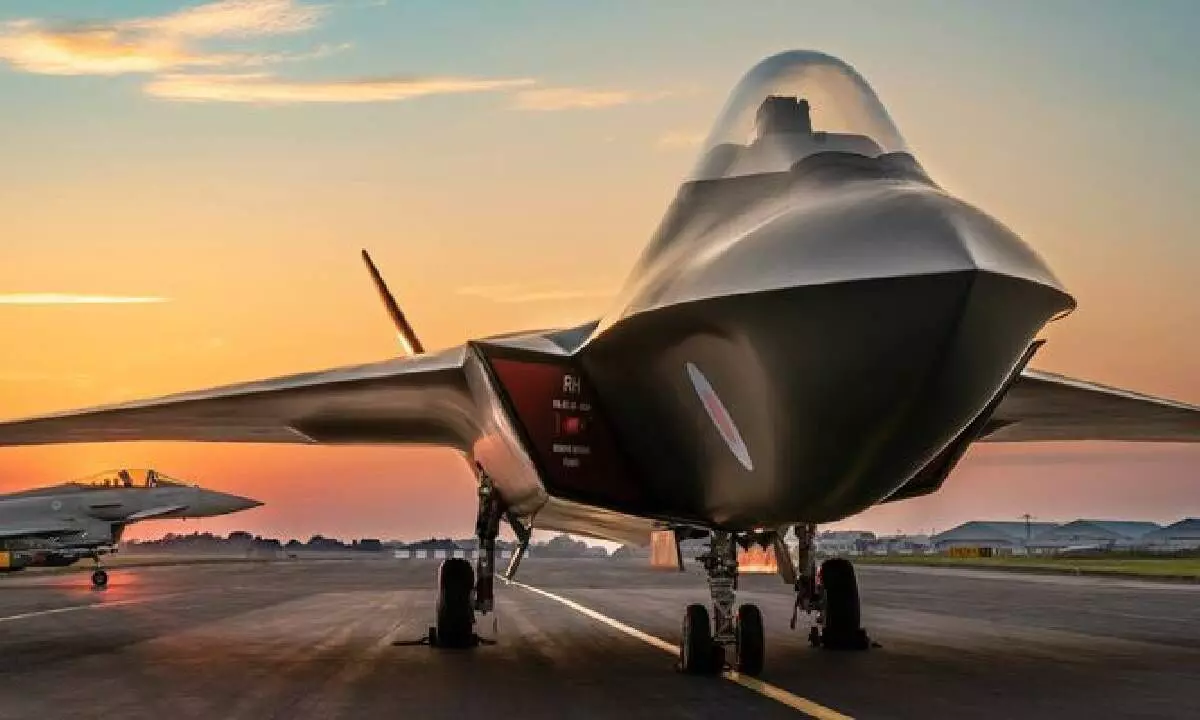Long road ahead for India to develop advanced combat 5th Gen fighter jets
The AMCAs will follow the phased induction of Tejas Mark-1A and Mark-2 jets
image for illustrative purpose

India will finally develop its own ambitious 5th-Gen fighter jet, the Advanced Medium Combat Aircraft (AMCA), following the clearance given to the nearly two-decade-old project by the Cabinet Committee on Security (CCS).
To be designed and developed by the Aeronautical Development Agency (ADA), which functions as a Defence Research and Development Organisation (DRDO) arm, the government has allocated Rs. 15,000 crore as initial funding, with more money to be provided as and when required. AMCA is designed as a medium-weight, multi-role fighter jet with advanced features such as enhanced sensor fusion, advanced work material, an advanced communication system that is difficult to intercept, edge computing capability in mission computers, leading to enhanced and faster situation awareness, and reduced cockpit workload for pilots.
The AMCA program will propel India into a select group of nations that have successfully developed fifth-generation fighters. Only the United States (F/A-22 Raptors/F-35A), Russia (SU 57), and China (Chengdu J-20 Mighty Dragon) have achieved this milestone in advanced jet development. Turkey’s 5th-Gen fighter called Kaan also made it.
The AMCAs will follow the phased induction of Tejas Mark-1A and Mark-2 jets. These aircraft are pivotal for the Indian Air Force (IAF), which currently faces the challenge of maintaining only 31 fighter squadrons despite the authorisation for 42 squadrons to address the China-Pakistan threat.
What is a fifth-gen fighter jet?
A fifth-generation fighter jet embodies four key attributes: It boasts stealth capabilities, rendering it nearly invisible to enemy radars, a feature determined by its radar cross-section; It can achieve 'supercruise,' surpassing the speed of sound without relying on fuel-intensive afterburners; It is equipped with advanced avionics and sensors integrated with network-centric operations. Most notably, artificial intelligence is increasingly employed to enhance the pilot-aircraft interface, enabling a single pilot to navigate the aircraft and engage in combat effectively.
It excels in outranging adversaries by detecting and targeting from extended distances facilitated by active electronically scanned array (AESA) radars.
Need for AMCA
The twin-engine aircraft, weighing 25 tonnes, will be bigger than other fighters in the IAF inventory. Equipped with state-of-the-art stealth capabilities, it aims to effectively evade enemy radar detection. Expected to rival or even outperform other fifth-generation stealth fighters worldwide, discussions for the AMCA began in 2007. Initially, the intention was to collaborate with Russia on the Fifth Generation Fighter Aircraft (FGFA) program. However, India withdrew from the FGFA project in 2018.
Unlike its predecessor, the 4.5-generation single-engine multirole aircraft, the indigenous Light Combat Aircraft (LCA) Tejas, the AMCA will demonstrate a significant leap in military technology. With a low electromagnetic signature, it will pose a formidable challenge for enemy radar systems. Furthermore, with its powerful sensors and advanced weaponry, it will be able to identify and neutralise enemy aircraft with precision. Its internal weapons bay can accommodate up to four long-range air-to-air missiles and multiple precision-guided munitions, with a maximum payload capacity of 1,500 kg.
Another crucial consideration is maximising aircraft utilisation time while minimising serviceability and maintenance periods. This goal will be achieved by implementing a comprehensive Integrated Vehicle Health Management (IVHM) system. The system will monitor various structural components and assess the aircraft's condition in real-time, ensuring effective maintenance planning and timely interventions.
Long road ahead
After receiving approval from the CCS, the ADA expects to conduct the first flight of the aircraft within four and a half to five years. The complete development timeline for the plane is estimated to span around ten years from now. Five prototypes will be developed before HAL initiates mass production.
Besides, the private sector's involvement in aircraft manufacturing is also on the cards.
The first prototype is projected to debut in 2026, with its maiden flight slated between 2027 and 2030. Following the development and testing of the prototype, which is estimated to require nine to 10 years, the initial production phase is expected to commence. The Indian Air Force plans to procure a minimum of 125 AMCA in Mark-1 and Mark-2 configurations. The Mark-2 is expected to feature a more powerful engine, incorporate sixth-generation advancements, and integrate technologies essential for sustained relevance in the forthcoming decades.
IAF’s dwindling numbers
Currently, IAF operates around 30 fighter squadrons, falling short of the authorised strength of 42. This deficit is expected to exacerbate as squadrons comprising MiG-21s, MiG-29s, Jaguars, and Mirage 2000s are slated for retirement by the middle of the decade.
The IAF has stipulated a need for seven squadrons of the AMCA initially. However, the projected induction of additional squadrons of LCAs and AMCA over the next decade will not bridge the gap to reach the sanctioned squadron strength.
(The writer is a journalist who writes on defence, strategic affairs and technology)

